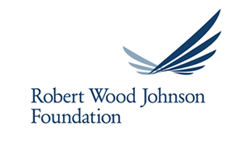1. Get the history right.
History is leaving much, if not most, of the human and health services not-for-profit sector over the next decade. In many, many cases the founder of the organization is stepping down, or the initial board is being reconstituted. Getting a true sense of what was at the heart and soul of the organization, and codifying it, is essential to moving forward in this time when our basic assumptions about doing good are being challenged.
To that point, it is worth remembering that the origins of human services did not grow out of the best of intentions. Feudal battles left people disabled, and the lords and masters made accommodation by allowing these veterans to beg at the gates of the city, thus the cap-in-handers (and ultimately, the handicapped). Allowing begging was based on the theory of the “worthy” and “unworthy” poor. We know this is not the foundation of your organization, it is however the espoused belief of the majority party in Washington, and the majority of state legislatures in our country.
2. Acknowledge and embed the history.
Celebrate the fact that the majority of not for profit health and human service founders are women. Have a board member get a portrait done of the current leader. Do an infographic of the chairperson’s time there. Have a big party (with a silent auction) and allow people to say good bye and thank you. Not doing so will hurt the organization and all will regret the lack of closure (this I know from personal experience).
3. Identify opportunities for core changes before the next leader arrives.
Hire an outside consultant a year before the departure to do an assessment of the change readiness of the organization. Insist they identify no more than three structural or procedural issues that can be resolved prior to the on-boarding of the new leader. Have the outgoing leader implement these changes.
4. Manage expectations, and prepare for disappointment ahead.
To describe the current federal and state budgets as being in crisis is an understatement. The competing priorities of doing good, and having any sort of cultural infrastructure will change the way you raise money, how grants will be decided, and if your organization will continue to exist as it has for the last decade. There is no precedent for the current attack on our safety net, on our values, and the depletion of tax revenue at the state level for discretionary spending.
Please connect with me on LinkedIn: https://www.linkedin.com/in/josefreum/














